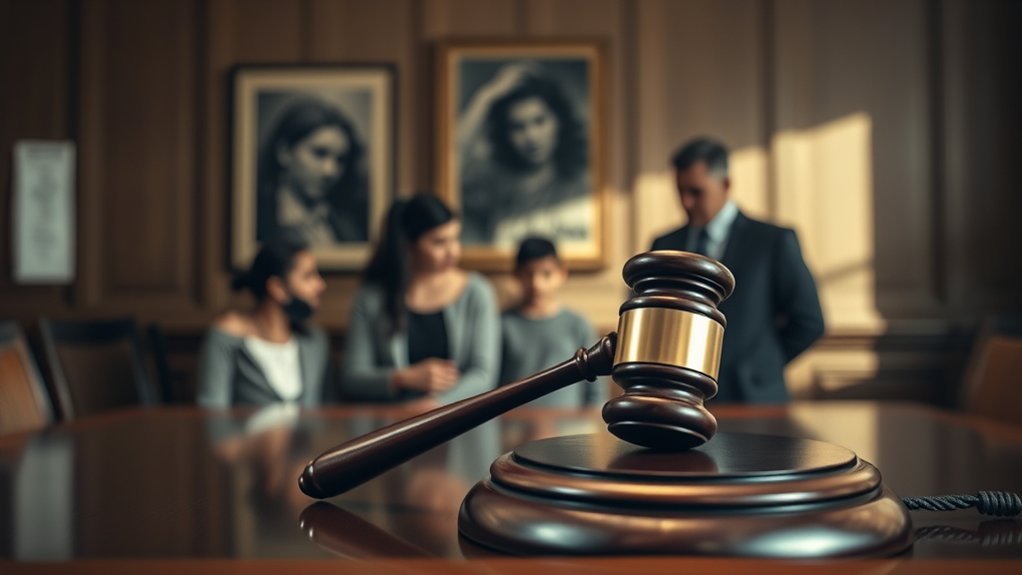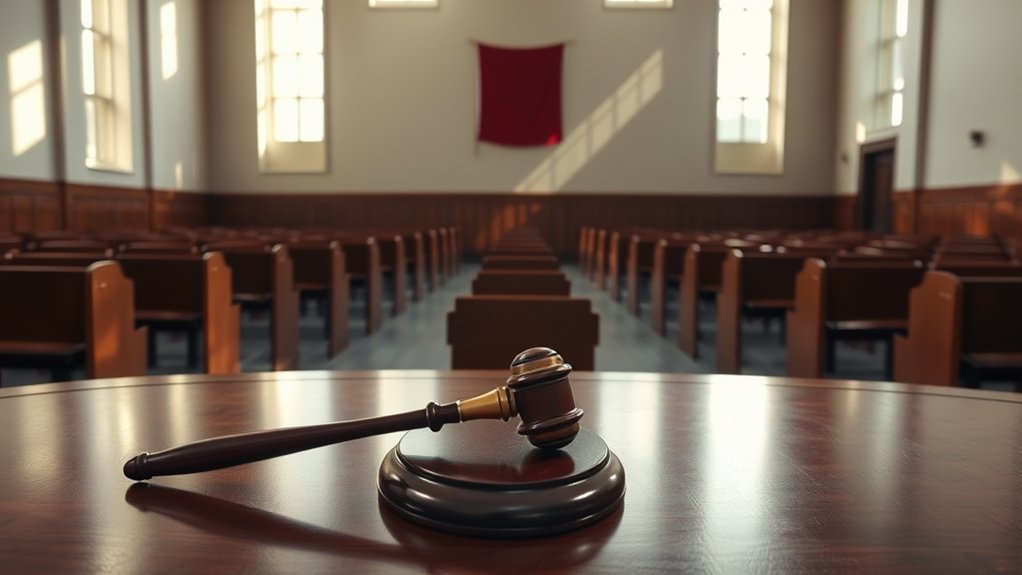You might not realize that red flag laws exist in numerous states, allowing for the temporary removal of firearms from individuals considered a threat. These laws involve a legal process that includes petitions from family members or law enforcement. However, the effectiveness and implications of such laws raise important questions about safety and individual rights. What criteria determine a threat, and how do these laws balance public safety with due process?
Definition of Red Flag Laws

Red flag laws are legislative measures designed to temporarily remove firearms from individuals deemed to pose a significant risk to themselves or others. These laws allow family members, law enforcement, or certain professionals to petition a court for an order to restrict access to firearms. You might find that red flag laws vary by state, with different criteria for what constitutes a “significant risk.” The aim is to prevent potential tragedies, such as suicides or mass shootings, by acting before an incident occurs. Critics argue these laws may infringe on Second Amendment rights, while supporters emphasize the importance of addressing mental health concerns. Understanding these laws is essential for grasping the ongoing debate about gun control and public safety.
How Red Flag Laws Work

Red flag laws allow authorities to temporarily remove firearms from individuals deemed a threat to themselves or others. You’ll see that the process typically involves a petition filed by family members or law enforcement, followed by a court hearing to assess the situation. Understanding the implications of these laws is essential, especially regarding their impact on gun owners and their rights.
Definition of Red Flag Laws
Laws designed to prevent potential harm by individuals often come under the umbrella of red flag laws. These laws aim to temporarily remove firearms from individuals deemed a threat to themselves or others. Understanding red flag laws involves recognizing their key components:
- Risk Assessment: Authorities evaluate a person’s behavior and mental state, identifying potential risks of harm.
- Temporary Restraining Orders: Courts can issue orders to seize firearms for a specified duration, allowing for a cooling-off period.
- Due Process: Individuals subject to these laws have the right to contest the orders in court, ensuring fairness in the process.
Process of Implementation
When someone poses a potential threat to themselves or others, a systematic process is triggered to implement red flag laws. This process typically involves law enforcement, mental health professionals, and the judicial system.
| Step | Action Taken | Responsible Party |
|---|---|---|
| 1 | Report threat | Concerned individual |
| 2 | Investigation initiated | Law enforcement |
| 3 | Petition for temporary order | Law enforcement |
| 4 | Court hearing to evaluate claims | Judicial system |
Once a petition is filed, a judge assesses the evidence. If deemed necessary, the judge issues a temporary order, allowing law enforcement to confiscate firearms. This multi-step process aims to prevent harm while respecting due process.
Impact on Gun Owners
Understanding how red flag laws impact gun owners is essential for maneuvering the complexities of firearm ownership and safety. These laws can greatly affect your rights and responsibilities as a gun owner. Here are three key impacts you should consider:
- Temporary Removal of Firearms: If a court determines you pose a risk, your firearms may be confiscated without your prior knowledge.
- Due Process Concerns: The process can sometimes feel rushed, raising questions about your ability to contest the claims made against you.
- Long-term Consequences: A red flag ruling could affect your ability to purchase firearms in the future, depending on state regulations.
Being informed about these aspects can help you navigate the legal landscape while ensuring your rights are protected.
Criteria for Issuing a Red Flag Order

To effectively issue a red flag order, specific criteria must be met, ensuring that the decision is both justified and necessary. Authorities typically assess the immediate risk posed by an individual, often considering threats of violence, self-harm, or the potential for harm to others. You’ll find that mental health evaluations and past behaviors play significant roles in this assessment. Evidence must demonstrate a clear and present danger, which can include documented incidents or credible threats. Additionally, the requester, often a family member or law enforcement, must provide sufficient proof to support the claim. This careful evaluation aims to balance public safety with individual rights, ensuring that red flag orders are not issued arbitrarily or without substantial justification.
Due Process and Legal Protections
Due process and legal protections are essential components of the red flag laws framework, ensuring that individuals’ rights are upheld throughout the process. These laws aim to balance public safety with individual liberties. Here are three key aspects of due process in this setting:
- Judicial Oversight: Courts must review petitions for red flag orders, providing a check against arbitrary decisions.
- Notification: Individuals targeted by red flag orders typically receive notice before any action is taken, allowing them to prepare a defense.
- Evidence Standards: Courts often require a showing of clear and convincing evidence, ensuring that orders aren’t issued lightly.
The Impact on Gun Violence Prevention
Red flag laws establish a legal framework that allows for the temporary removal of firearms from individuals deemed a threat to themselves or others. You might wonder how effective these laws are in actually reducing gun violence. Examining the evidence can provide insights into their impact and inform future policy decisions.
Legal Framework Overview
While many states have implemented red flag laws to address gun violence, the effectiveness of these laws largely hinges on their legal frameworks and enforcement mechanisms. Understanding these components can help you grasp how red flag laws operate in practice.
- Petition Process: Individuals, often family members or law enforcement, can petition the court to temporarily remove firearms from someone deemed a risk.
- Judicial Review: Courts evaluate evidence presented to determine if the individual poses a significant threat, ensuring due process.
- Duration and Renewal: Most laws specify a temporary duration for firearm removal, with options for renewal based on ongoing risk assessments.
These elements establish a structure aimed at balancing public safety with individual rights, creating a vital foundation for effective implementation.
Effectiveness in Reducing Violence
Although the effectiveness of red flag laws remains a topic of debate, studies suggest these measures can play a significant role in reducing gun violence. By allowing law enforcement or family members to petition for the temporary removal of firearms from individuals deemed a risk, these laws aim to prevent potential violent acts before they occur. Research indicates that states with red flag laws often see a decrease in gun-related suicides and mass shootings. However, the success of these laws largely depends on implementation and public awareness. You must recognize that while red flag laws can be an important tool, they are most effective when combined with broader mental health initiatives and community support systems to address the root causes of violence.
Controversies and Criticisms
As debates surrounding gun control intensify, red flag laws face significant scrutiny from various stakeholders. Critics argue that these laws can infringe upon individual rights and due process, raising concerns about fairness. Key points of contention include:
- Subjectivity: The criteria for determining a person’s risk can be vague, leading to possible misuse.
- Implementation: Critics believe that inconsistent application across jurisdictions may undermine the laws’ effectiveness.
- Mental Health Stigma: There’s a worry that these laws could further stigmatize mental health issues, discouraging individuals from seeking help.
While advocates argue for public safety, the controversies highlight a complex balancing act between individual rights and community protection. Understanding these criticisms is essential as you consider the broader implications of red flag laws.
State-Level Variations in Implementation
Despite the growing adoption of red flag laws across the United States, their implementation varies considerably from state to state. Some states have streamlined processes for law enforcement and family members to petition for firearm removal, while others impose more stringent criteria or longer waiting periods. For instance, California allows for temporary gun seizures without a hearing, whereas Texas requires a court hearing before any action. Additionally, the duration of the orders can differ dramatically; some states enforce short-term orders, while others may extend them for a year or more. This inconsistency can impact the effectiveness of these laws, leading to varying outcomes in preventing gun violence and addressing mental health crises across the nation.
The Future of Red Flag Laws
Given the increasing concern over gun violence and mental health crises, the future of red flag laws appears to hinge on several key factors, including public perception, legislative support, and judicial challenges. To understand how these elements will shape the laws, consider the following:
- Public Awareness: As education about mental health and gun safety grows, you may see shifts in public opinion that could influence lawmakers.
- Legislative Action: States that currently lack red flag laws might adopt them, while existing ones may face amendments based on effectiveness and feedback.
- Judicial Scrutiny: Courts will likely continue to evaluate the constitutionality of these laws, impacting their implementation and enforcement.
The interplay of these factors will ultimately determine how red flag laws evolve in the coming years.
Conclusion
In summary, red flag laws play an essential role in enhancing public safety by allowing for the temporary removal of firearms from individuals posing a threat. Significantly, studies suggest these laws can reduce gun suicides by up to 7.5%. While they face criticism regarding due process and potential misuse, their effectiveness in preventing gun violence cannot be overlooked. As states continue to adopt and refine these measures, the conversation around their implementation will remain critical for balancing rights and safety.

